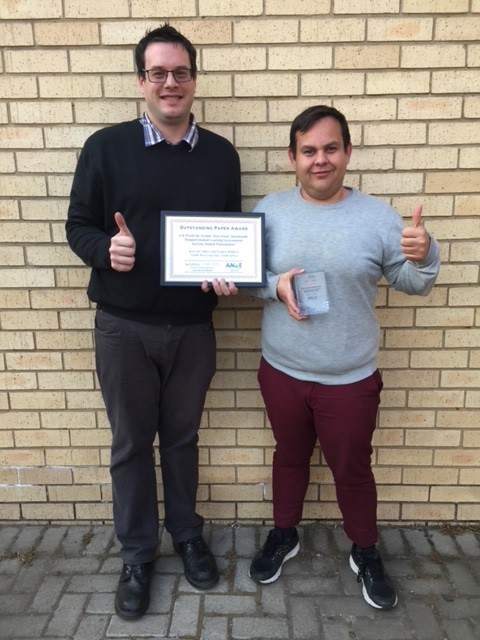Offering an enhanced learning experience using multimedia online learning platforms is the key to encouraging participation among Generation Z students – people born between 1997 and the early 2010s.
This is one of the findings of a North-West University (NWU) research team after they investigated both the ins and the outs of the development of student pages on learning management systems (LMSs).
Koos de Villiers, a lecturer in communication studies at the Vanderbijlpark Campus, says that integrating more of the capabilities of the NWU’s online learning platform, eFundi, could enrich students’ experience when using the platform.
Usually, the various functionalities of eFundi are accessed as standalone features, which is not ideal for the multimedia-loving students of today. To mitigate this issue, Koos tried recording and uploading videos and providing pre- and post-class activities for a third-year module.
“For the most part, this approach helped the students to contextualise content and it frees up time for discussions and practical exercises. But this was not the case for everyone.”
His conclusion was confirmed when, as part of the communication studies’ revised curriculum in 2019, Koos moved the third-year module mentioned above to the first-year course. The first-year site on eFundi received more visits than the previous year's third-year module had, despite each having similar content and student numbers. The only change to the first-year module was the use of different layout techniques (banners, icons, etc.), placement of information and the multimedia elements that were used.
Koos then collaborated with Dr Gordon Matthew, a research technologist in the School of Languages, to investigate what makes some multimedia environments more attractive than others on eFundi and what impact multimedia usage has on teaching and learning.
Considering the multimedia impact
Their first published research paper identified four types of multimedia elements often found on an eFundi lesson page. These multimedia elements were based on look and feel (colour and layout), basic structural elements (text, pictures and audio), dynamic structural elements (videos and animations), and interactive elements (hyperlinks and interactive tools). More dynamic structural and interactive elements seemed to engage students more and increased the site visits to one of the eFundi sites.
Although this first paper focused on multimedia functionality, it did not consider the cognitive aspects of the arrangement, navigation and structure that may also have hindered student interaction and the number of visits.
Therefore, for their second paper, the researchers identified specific scenarios in which cognitive overload, which may affect learning and interaction, is most likely to occur, as well as possible ways to reduce its effects in order to promote learning. Their study revealed six instances in which cognitive overload can occur.
“These instances include the placement of information, redundant information and splitting the student's attention across multiple sources or separating these sources through space or time.”
Considering this information, the two researchers also developed a checklist to evaluate and facilitate the development and design of multimedia learning management (LM) sites. This checklist involves both the use and function of multimedia elements, as well as the cognitive implications of using or not using these elements of learning while designing eFundi sites.
“Combining both the functionality of multimedia elements and their cognitive implications for learning provides a more robust evaluation tool for LM sites,” says Koos.
The researchers also collaborated with Prof Nelda Mouton, a lecturer at the NWU Business School, on a pilot project to test the checklist in 2022. The result was a paper on designing multimedia environments for LM sites.
For this study they modified their checklist into a lecturer-experience questionnaire, focusing on the lecturer's thought process when creating a learning experience on an LM page. The findings indicated that, although lecturers applied some instructional design principles, there was a lack of coherence across multiple LM pages for the same module.
“This may fragment the learning process and could potentially increase the cognitive load or ultimately cause cognitive overload and lack of learning. By implementing the checklist in the design process, these aspects can be countered, and lecturers can be assisted to evaluate the design of learning experiences. In this way, they can also improve learning for students and facilitate the interactive process on the LM pages,” says Koos.
Towards future research
Koos says their research has set the framework for the development of a baseline checklist, which can be modified further through future research.
“The next phase of the project will be to determine whether lecturers will benefit from using the checklist to evaluate the use of multimedia elements and construct their LM sites and whether the checklist improves their understanding of instructional design ideas.”

Dr Gordon Matthew and Koos de Villiers with their Outstanding Paper Award for their first paper at the EdMedia Conference in 2019.
